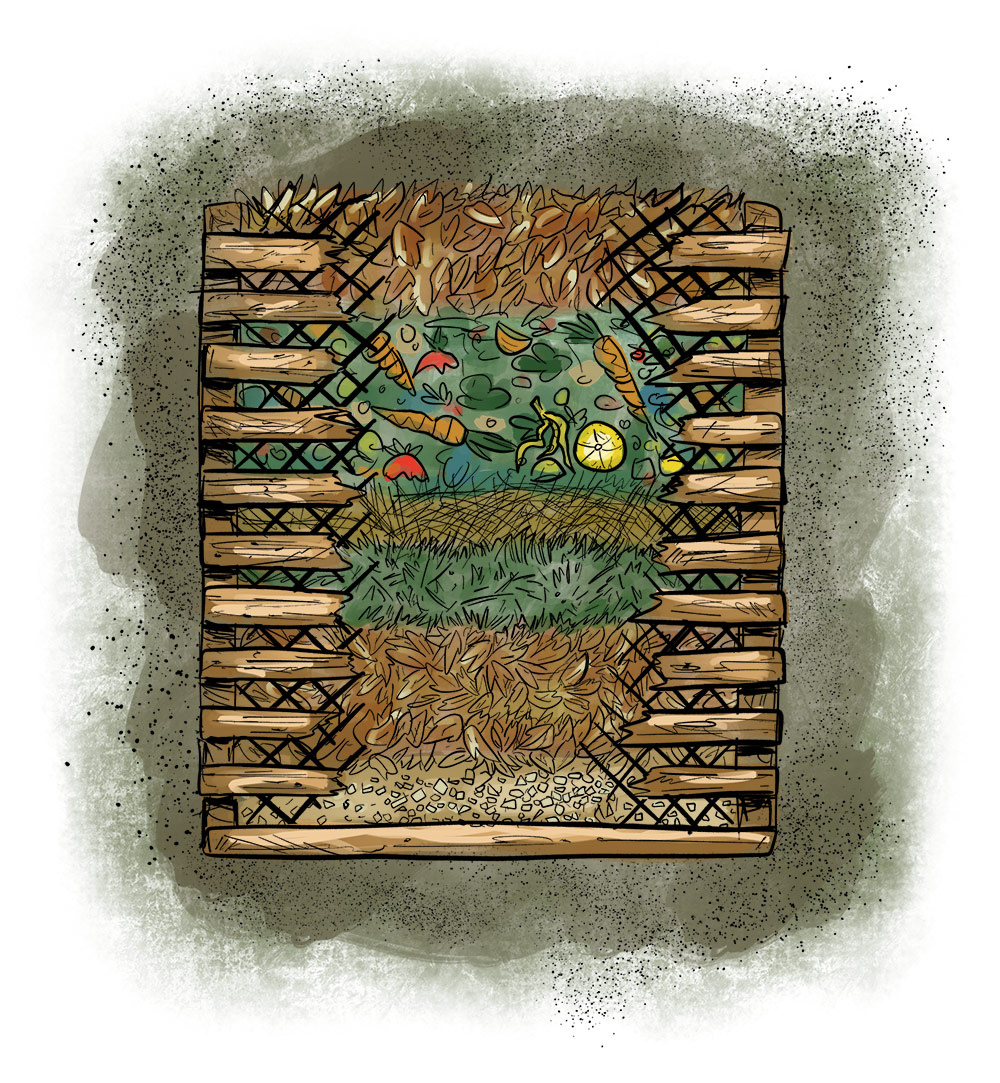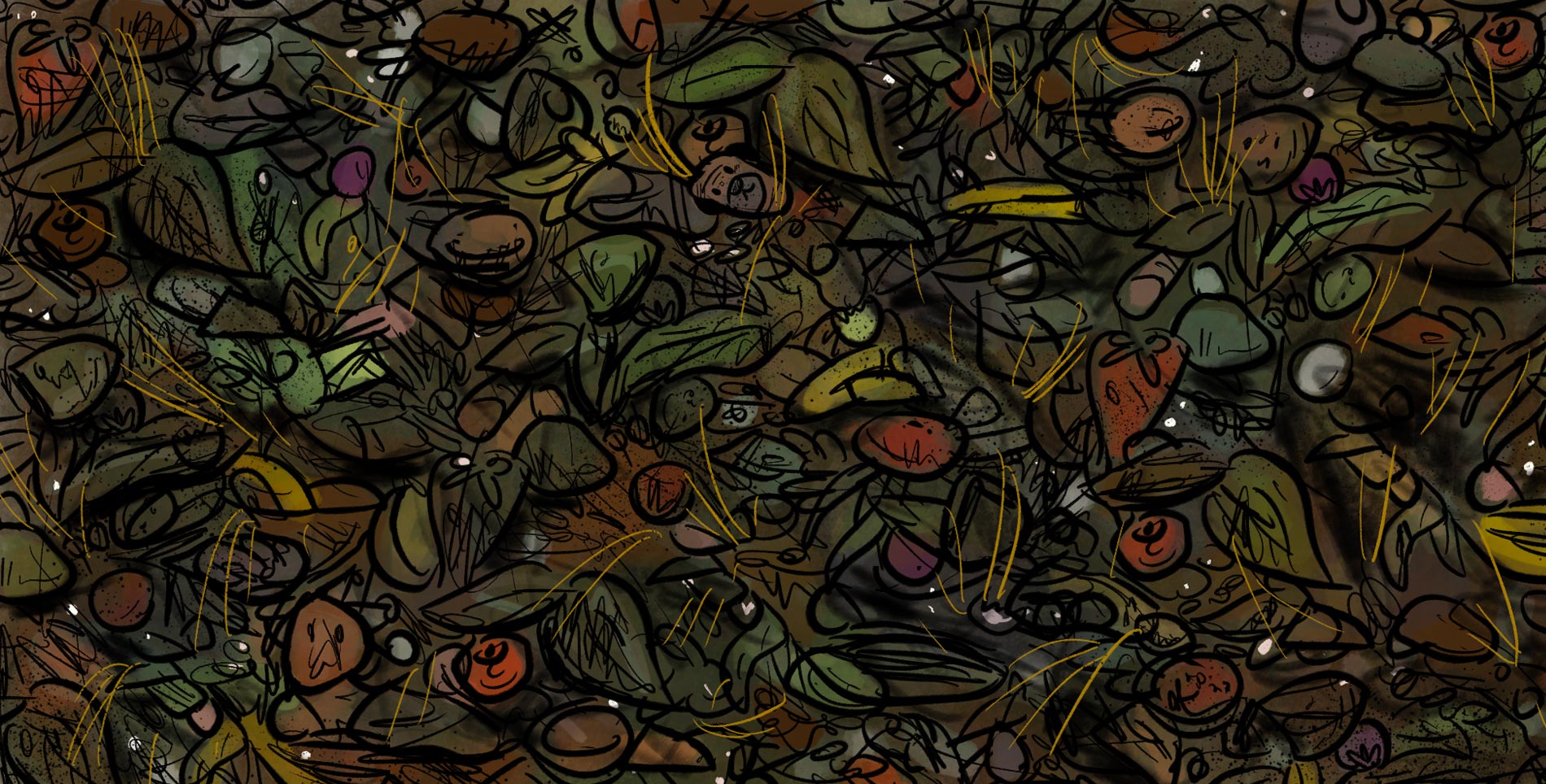Can rotten food save the world? No. Quite the opposite, in fact. Food left to rot in landfills produces a quarter of all methane gas emitted in the United States, one of the main culprits responsible for global warming.
Composted food, on the other hand, might just be the unsung hero of our planet’s future. If you, like me, have always thought that a compost pile equated to a rotting, sludge-like mound of trash that collects flies in the corner of your backyard, then you’ll be pleasantly surprised to discover the stereotype isn’t completely true.
It isn’t sexy, but as with many things deemed a little weird, funky or outside the norm that we’re accustomed to, the world of composting is onto something. It can teach us, if we let it. More importantly, its humble process could go so far as to safeguard us against ourselves, ensuring that the habits we adopt and the diets we prioritize aren’t entered into in vain; additionally, that the technology quietly replicating in every sphere of life won’t overtake us entirely. We can create and innovate and evolve, yet still be humans at the end of the day.
All we need are three simple things.
“To make compost you need your nitrogen source: things like food waste or fresh produce—anything that’s alive, basically,” begins Matthew “Beadle” Beadlecomb. He’s co-owner and operations manager of Compost Nashville, a local service that makes it easy for customers to turn food waste into fertile soil. I’ve called him to find out what exactly composting is, motivated by a dream of being totally green. But I’m also acutely aware of how little I actually know about food waste, or why saving my apple core should prove integral to the planet.
Beadle continues, “Then you have carbon, which comes from your woody waste like woodchips, dried leaves or dried dead grass clippings, paper… things like that. Then oxygen; it’s the third ingredient for good compost.”

It’s these three things, he explains—nitrogen, carbon, oxygen—in the right proportions that turns one man’s trash into one garden’s high-potency mud bath. This is also where novice composters can get it wrong, mistaking a compost bin for garbage disposal and never flipping the switch.
“If you’re just throwing your food waste in a pile, it’s not going to get that carbon source it needs to heat up and to decompose properly,” he says. “It’s just going to rot and that’s why it’s going to get stinky, mushy and nasty. That’s actually what happens in our landfills.”
“When food waste or organic matter goes to the landfill and gets buried, it gets no oxygen whatsoever. Because of that, it rots and it releases methane. That’s one of the main reasons we started the business: to keep as much food waste out of our landfills as possible. Forty percent of what’s in our landfills is organic matter; it’s all rotting and releasing methane. Actually, twenty-five percent of the methane released in the United States each year comes from rotting food in landfills,” Beadlecomb explains why this is so significant. “[Methane’s] a greenhouse gas that’s more powerful than carbon dioxide; it’s about the equivalent of thirty-three million cars per year.”
I set my jaw back in place and keep listening, trying to understand the irony of wrapping trash in plastic and burying it in the ground when it sounds like it could “disappear” all on its own. How does the trifecta of C, N and O make that happen?
“At different stages there will be different life forms in the compost pile,” Beadlecomb clarifies. “It’s basically like a little [microbe] universe in there. As they eat, breathe, die and move everything around, the compost pile will actually heat up. But to get those microorganisms, you need that right combination of carbon and nitrogen—‘greens’ and ‘browns’—so the pile will heat up and go through these cycles [of] heat and cool. It’s a matter of all these organisms coming and breaking that material back down into that natural form so it becomes usable compost.”
Oxygen is the fuel that makes it happen. “The more oxygen you can give the system, the quicker all this process is happening,” he adds. “So if you were to do what most people do, what’s called ‘turning their compost pile,’ [you] take a pitchfork or shovel and literally flip [the pile] over and that allows oxygen to get to parts where it wasn’t before. The more you do that on a regular basis, the quicker it will break down.”
And that means the quicker the earth is replenished with what we gain from it. I’m beginning to realize that composting is about more than just finding a way to handle our trash; it’s about mending the soil. Growing good food requires nutrients from the ground, both the plants and animals that we eat deplete dirt’s best resources. If those nutrients aren’t returned, then what we’re left with is what we see a lot of today: nutrient-poor cropland fortified solely via chemicals and pesticides.
“In nature this stuff happens naturally,” Beadlecomb points out. “There is no garbage collection in the woods. Things constantly grow, things constantly die, and those things just decompose and go back into the soil. They rejuvenate themselves.” It’s here that the conversation shifts from practical into philosophical; understanding the nature of a compost pile is actually a way of seeing our role as human beings—as cycle disruptors or cycle completers. “But when man comes into the picture and we start doing agriculture and building our civilizations like we do, we upset that process. For a long time [we] were very well aware of what was going on; everybody composted and it was the natural cycle of life, but we’ve gotten farther and farther away from living with nature. Nature is not something you just go and visit; it’s something you are a part of every day.”
At least, for now.
My mind fixates on images of Hefty bags stacked like skyscrapers, sprinkled with dirt for good measure. It’s the sad truth I’d hoped wasn’t as tangible as Wall-E made it seem, but the math adds up. Finite land space plus ever-growing “heavy-duty” trash bag supply equals see Teacher. Or in this case, Beadlecomb.
Starting a compost pile on your own can seem intimidating, but he offers logical advice. “It depends on how you are composting,” he points out the difference between someone at home and a professional compost processing facility, like the one he works with in order to rescue more waste from the landfill. Compost processing sites work on a scale that’s able to continually build and aerate piles, thus speeding up decomposition and transforming items like meat, dairy and compostable plastics that an individual most likely couldn’t.
“For a home composter you don’t put meat and you don’t put dairy in there,” he says. “It has to get a lot hotter. And it can take longer or it may not break down at all. If it doesn’t, it’s going to attract the unwanted pests in a city.”
Beadlecomb advises the home composter focus on green matter like vegetable and fruit peelings, eggshells and coffee grounds, then brown matter like leaves, plant trimmings and dried grass, remembering that at least twenty to thirty times the amount of brown matter is required over green, and to turn it whenever you add to it. If it starts to smell, add more brown matter. If it gets too dry and crumbly, add more green.
“It does take a conscious kind of effort, and it is a cycle throughout the year,” he notes. “Different things at different times to really have what you need to create the compost.
“One of the great things about our service and the fact that we work with [a processing facility], is that we can take those other things that you can’t compost at home, like meat and dairy and bones, all your paper towels, napkins, compostable plastics and things like that.” And there are other materials to be considered, too. “A lot of things that people don’t think to compost, you can: your hair, your pet hair, your fingernail and toenail clippings, the tissue you blow your nose with, the toilet paper roll… anything that is a paper-based product was once a tree. Anything that was once alive in any shape, form or fashion, whether it be a plant or an animal, we can compost it.”
That’s a helpful metric for what you can’t compost, as well. Plastics that aren’t certified compostable, metals and Styrofoam—which Beadlecomb is quick to label as one of the worst things on the planet—can’t go in a compost bin. In short, if man has made it, the earth doesn’t want it.
I take a deep breath. Hope? Are you still out there under all that… stuff?
We switch to long-game strategy and how restaurants and businesses can a play a role in composting. Is it easy to get the big guys on board?
“We’ve been serving a few commercial customers since the early days [in 2014], but it’s exploded this year,” he replies. “So we have a lot of businesses we are working with … doing it because they know it’s the right thing to do and they care. It’s not cheap and it’s cheaper to send to a landfill; but as composting gets bigger, the more customers we have and the more we can bring down costs to make it more affordable for everybody, which is the long-term goal.”
He adds, “In fifty years everybody will do it and you will be looked at askew at if you try to throw [your trash] in the trashcan. The Natural Resources Defense Council has already picked Nashville as a pilot city to help show the United States [that] this is possible, so Nashville is a hopping place for it right now, but it is everywhere.”
In the meantime, whether it’s starting a compost pile of your own, a community garden, or avoiding the tendency to only eat perfectly symmetrical, aesthetically-pleasing produce, something as simple as asking questions can help breathe new life into the topic of food waste—aerate society’s ingrained routines, if you will.
“One of the things that anyone can do is if they go to a restaurant, ask them, ‘Do you guys compost?’” Beadlecomb suggests. “Start to get that on the minds of people who can make those changes when the opportunity arises.”
It’s clear that sooner rather than later we’ll be confronted with this issue; it’s just a matter of which side of the solution we’ll choose to be on. The phrase, “there’s no such thing as a free lunch” pops into my head. As a vegetarian, it takes on a new meaning for me. Never before have I thought of my little basil or cherry tomato plant as asking anything of me in return for its bounty. However, precisely because dirt doesn’t ask, isn’t that all the more reason why I should? What to thank this planet with for its matchless process of farm-to-table?
The answer, literally, falls from trees.







Our comments section is for members only.
Join today to gain exclusive access.